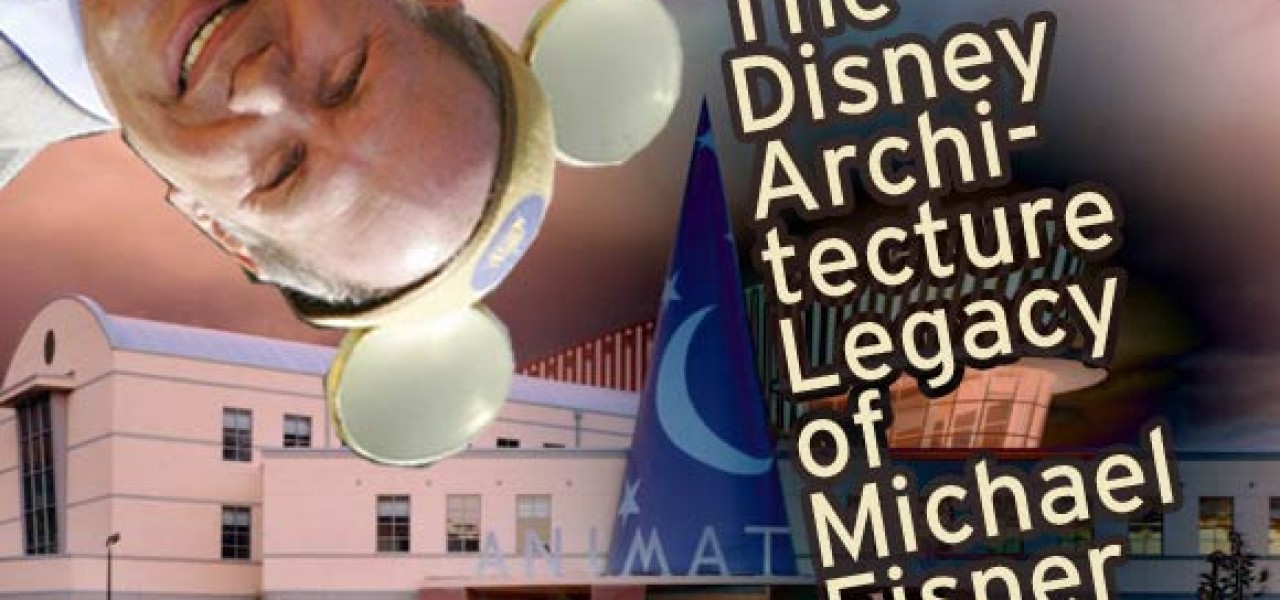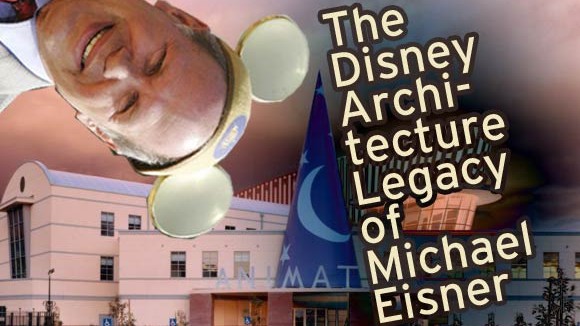

The Disney Architecture Legacy of Michael Eisner

In 1990, when the Dolphin and Swan hotels opened at Walt Disney World, it marked the start of the ill-fated Disney Decade, a plan developed by then CEO Michael Eisner. Completely enamored by the practice of architecture, Eisner commissioned world-famous architects to design themed hotels and office buildings for his company.
Eisner’s connection to the who’s who of architecture began when Robert A.M. Stern, the current Dean of the Yale University School of Architecture, designed a Manhattan apartment for Eisner’s parents in the early 1970s. Nearly 20 years later, Stern served on the Walt Disney Company’s Board of Directors during Eisner’s tenure, and designed the Feature Animation Building, which opened in 1994.
Michael Graves, the creator of the Dolphin and Swan hotels, was one of many architects who, in the 1970s, was sick of the clean lines and simple structures of the prevailing modernist movement in architecture. Graves became one of the leaders associated with the postmodern movement, which brought absurdity, decoration, and whimsy to architecture. This generation of architects, many of whom admit to growing up on Mickey Mouse, were ripe for embracing pop culture and, subsequently, Eisner’s vision.

For better or worse, Graves is most often remembered for the Team Disney Building, which was completed shortly after the Swan Hotel. Based on classical architecture, the building features the seven dwarfs as its structural columns. Eisner, who knew the building was a gamble, watched its construction progress from his office window. “The fact is, we’re the only company who can get away with it,” Eisner told Patricia Leigh Brown in a riveting New York Times profile from 1990. To this day, images of the building show up in slideshows presented in architecture classes around the world, often presented with a sneer and a shudder from professors.
As the Team Disney Building neared completion, it took the spotlight off an internal battle looming within the company, one that would eventually culminate in the ousting of Eisner by the mid-2000s. Roy E. Disney, the nephew of Walt Disney who had served as both vice-chairman of the Board of Directors and head of animation when he returned to the company in 1984, was disgusted by Graves’s building. In the prologue of Disney War, author James B. Stewart writes, “Though the monumental facade was leavened by bas-reliefs of the Seven Dwarfs in the pediment, Roy felt the building represented everything that was bloated and pretentious in the company that Eisner had created.”


For many others, Graves’s buildings for Eisner encapsulate the period of the early ’90s when the Walt Disney Company readied itself for an optimistic future, one that would be driven by the newly established home video market. The company had barely survived the 1980s and welcomed Eisner who oversaw the back-to-back releases of Who Framed Roger Rabbit and The Little Mermaid, the studio’s first financially successful and culturally relevant animated features in decades.
Brown’s New York Times article is fascinating to read now that nearly fifteen years have passed. It shows how the high versus low art debate continued to haunt Disney and the field of animation in general. It also illustrates the internal struggle many architects fought over having Eisner as a client. “It’s precarious to be co-opted by Mickey Mouse,” said architect Frank Gehry before designing the infamous Walt Disney Concert Hall.
By the late ’90s, the Disney Decade had all but vanished as Eisner’s popularity declined within the company. Coincidentally, postmodern architecture mirrored this descent as younger generations of architects turned against pop culture references in their work. But for a brief moment, the separate visions of Eisner and the postmodernists crossed paths to create architecture that is still discussed and debated.


.png)